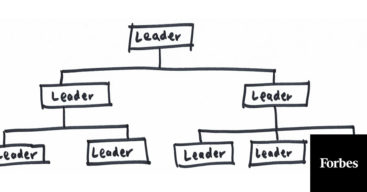There’s a moment, when you’re trying to do something big or new, that you realize that logical analysis has taken you as far as it can. It’s never going to convince you to take that final step. Too much still feels uncertain. You realize that if you’re going to take that final step, it’s going to have to be a leap of faith.
I call this the kinetic moment. It’s the moment when you see the potential in something and decide to make a move, even though you still have doubts. Kinetic moments are often filled with heart palpitations, sweaty palms, and butterflies. They’re characterized by an indescribable mixture of excitement, tension, terror, and relief.
We reach kinetic moments for one reason: not risking seems scarier than risking. We rarely love the thought of taking action in these moments, but we hate the thought of not taking action. So we act.
An example is the musician who feels stage fright but takes the stage anyway because he can’t imagine not playing his music for others. Or an average, usually quiet citizen who speaks up because not saying something feels too irresponsible. Or an entrepreneur who is hesitant to invest in a new idea, but who jumps in because not taking her shot is unimaginable.
Once you jump in, you often learn an important lesson: your initial fears were largely unfounded. Things weren’t as difficult as you thought they would be. You found support where you least expected it. And you were more capable than you realized.
You just had to start moving in order to understand this.
The Art of Starting
If you don’t start somewhere, you’ll never get anywhere. I’m always amazed at how this little truism trips people up time and time again. I include myself. I’ll have an idea, think about it, plan for it, and then sit on it for a while, waiting for the timing to be better before getting started. But better timing never comes. The idea keeps eating at me. I think about it some more, and finally I just jump in. Within days, I always have the same thought: worrying about starting was much more painful than doing it.
As a case in point when writing my books I wasn’t sure how to approach several chapters and what exactly I wanted to say. I sat down to think about them. Then I thought some more. Then I thought even more. Weeks passed. Finally, out of desperation, I started writing. To my surprise, what came out on the page looked completely different from what I had been thinking about for so long. There was something about writing that reoriented me and made me realize what the chapter really needed to say. Once the chapter was complete, I vowed never to get myself into that spot again. Then, two chapters later—you guessed it, stuck again.
For me, the good news was that each bout of paralysis got shorter as I found little things I could do to get me into action faster. I could talk ideas into a recorder first, or just start writing a stream of consciousness, or have others interview me before I wrote. Through the process I gained a deeper appreciation that starting is an art. And that I had to (and have to) keep experimenting with ways to start in order to get better at it.
Physics is instructive in the art of starting. Two laws in particular, inertia and momentum, are helpful reminders.
Inertia is the resistance of a body to changes in its state of motion. The only way a body moves from rest to motion, or motion to rest, is through the addition of an outside force. That means that while it takes a force to put something in motion, it’s the exact opposite once something is already in motion, it takes a force to stop it.
Momentum is mass times velocity. Once a body is in motion, every nudge forward is additive and builds steam. The more momentum something has, the harder it becomes to stop. The implications of inertia and momentum for risk-taking are profound. Start moving and physics is your friend. Don’t move and it’s your worst enemy.
Often, the force needed to start something isn’t that big. It can be a single conversation, document, or meeting. It doesn’t have to solve every problem. In fact, it doesn’t even have to be the right move. It just has to get things in motion. It just has to lead to another action. And then another. It’s easy to get so fixated on a big end goal that you discount the small efforts needed to start a process. You think they’ll barely make a dent in what you’re trying to do. However, it’s only through repeated small efforts that you ever make progress.
Excerpted and adapted from Taking Smart Risks



